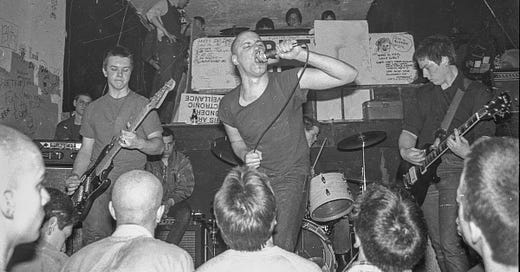The Freezer Theater, CBGB and the creative future of cities
Can we find a way to design urban environments that foster the raw, unfiltered energy that once made these spaces possible?
What does it mean when social interactions are increasingly shaped by consumer expectations? Spaces like the Freezer Theater and CBGB offered communities the freedom to define themselves, without the constraints of brand identity. I had the unique experience of being part of these venues. The Freezer was the starting point for Detroit’s hardcore scene, which evolved into industrial music and eventually into Detroit Techno. CBGB, initially conceived as a country and bluegrass venue, transformed into the birthplace of New York’s punk and new wave movements. What made these spaces special was their ambiguity—an open-endedness that was essential to fostering creative movements and meaningful rites of passage.
Today’s commercial venues subtly dictate how people socialize, tying interactions to consumer behavior. As designers and urban planners, we should be asking if this trend is stifling creativity. How do we create spaces that encourage genuine human connection, not mediated by commercial interests? What happens when our cultural identities are formed within environments that prioritize consumption over expression?
In the past, spaces like the Freezer were accessible to all. They were low-cost, inclusive, and encouraged anyone with a desire to explore and create. But today’s third spaces—curated parks, branded pop-up events, and commercial gathering spots—often require a financial buy-in, pushing away those who can’t afford to participate. This trend risks making cities more exclusive, where only those with disposable income can engage in the social life of the urban landscape. Should urban planners be thinking more critically about accessibility? What kinds of spaces can we design that foster diversity and inclusivity without the weight of commercial expectation?
We also need to consider the impact of this shift on how culture is produced. In unprogrammed spaces, culture emerges organically, shaped by the people who inhabit it. The Freezer was a catalyst for Detroit’s industrial scene because it allowed for risk-taking and boundary-pushing. In a world where social spaces are increasingly brand-oriented, are we losing the environments that allow new cultural movements to form? Are we creating cities where creativity is constrained by the limits of consumer brands and programming?
As urban planners and designers, it’s time to rethink what third spaces can be in the modern city. Instead of relying on the commercial model that has come to dominate, we should be exploring ways to create environments that encourage spontaneity, diversity, and true community-building. Can we find a way to design urban environments that foster the raw, unfiltered energy that once made these spaces possible? The answers to these questions will shape the future of our cities and determine whether they remain places where creativity can thrive.




